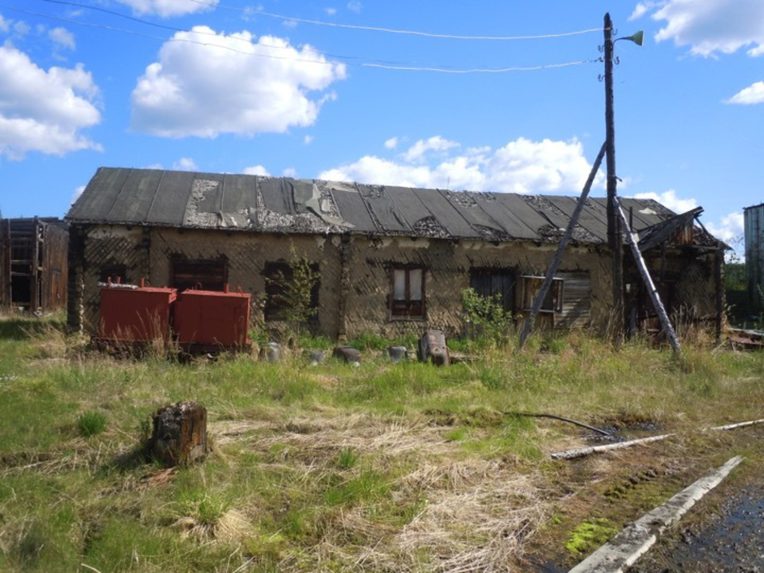Haunting Afterlives of the Gulag in the Siberian Sub-Arctic
From the Series: Arctic Abstractive Industry
From the Series: Arctic Abstractive Industry

What experiences and senses of place emerge from the legacies of modern industrial projects that have consumed millions of human destinies through incarcerated labor for the extraction of natural resources?
My research examines the legacy of mass violence in the Siberian Gulag, focusing in particular on the spatial dimensions of violent death, indigenous cosmology, and afterlives in a territory of former concentration camps in Siberia. I am especially interested in the cosmologically productive dynamic that indexes new spiritual forms emerging as a result of continuous interaction between local animist perceptions of the afterlife and the violent deaths of those who were incarcerated in Siberian concentration camps. The monstrosity of the Gulag, expressed in mass imprisonment and slavery within an expansive network of concentration camps, was a massive assault on both humanity and nature. Here, I am referring to monstrosity not only as characteristic of tragic events, but also in its productive or rhizomatic form through a mode of “expansion, contagion and peopling” (Deleuze and Guattari 1987, 264). It is this form of emergent monstrosity that is now generating new varieties of afterlife in the vast territory of the former Gulag camps.

Recently published historical accounts of Siberia that present a view from the Russian metropole hardly attend to perceptions of the Gulag among Siberian indigenous groups. In Siberia the Gulag is an unwrapped, sporadic story that would resist any positivist treatment or historiographical systematization (Ulturgasheva 2015). Remnants of its infrastructure—consisting of dumped railways alongside ghost towns, bridges hanging over stony rivers, eerie camps with watchtowers, and fortified barracks alongside the Road of Bones (Kolyma Road)—may look abandoned and desolate, but are still participating in a process of cosmological worldmaking.
While large numbers of former prison camps were abandoned after the suspension of the Gulag system in 1954, the territories of several Siberian camps were put to use by Soviet authorities as the foundation for new settlements of coercively settled indigenous peoples. One such village, where about seven hundred Eveny now reside, was constructed on the former territory of a Gulag camp. The Eveny, an Asiatic minority who number around seventeen thousand and speak a Tungus-Manchu language, mostly live in northern Siberia and engage in a double economy that combines reindeer herding and hunting. In the early 1970s, the process of enforced sedentarization and the proximity of this group to a former concentration camp made them subject to a forced relocation into an artificially created settlement.
By merging a space of violent death with a space for the coercively settled living, those involved in the construction of the village carelessly activated the post-Gulag emergence of spirits known as arinkael (singular: arinka). In Eveny cosmology, arinkael are humans who posthumously stay in the world of the living after suffering a violent death. Arinkael have the power to pull the living into the world of the dead, posing a threat to any who happen to intrude into the spaces they occupy. If they were rarely encountered by the living before the forced relocation of the village in the 1970s, at present the space of the village is swarming with them.
During my fieldwork in the village in 2010 and 2011, I collected detailed descriptions of arinkael, recorded the location of the sites inhabited by them, and examined existing documentation recorded by local volunteers from one of the towns located on Kolyma Road (now lost after severe flooding in 2013). In one pile of documents, I found a copy of a map of the concentration camp on which the present village stands. The map was astonishingly precise, and it turned out that the locations of haunted buildings used to serve as execution sites. Furthermore, the village depot used to be a barracks that contained several isolation cells where prisoners were tortured, starved, or frozen to death. Gulag prisoners were never buried properly; instead, they were thrown into communal holes or their bodies were used as filler for the Road of Bones.
The boundary between the worlds of the living and the dead has been transgressed by the forced relocation of the Eveny, causing continuous mutual disturbance and giving rise to new forms of arinkael. At present, the village buildings are haunted by arinkael that differ from older local spirits, who are typically described as having an Asiatic, Eveny appearance. The new arinkael, by contrast, have blond hair, large blue eyes, and prison camp apparel. In 2013 my interlocutors reported that the arinkael continue to expand their presence, chasing the frightened living away from their houses. People either move out of the village and resettle in other parts of the region (thus increasing outmigration rates) or move from house to house in search of a quieter place without the presence of disturbing spirits. In western Russia, memories about the Gulag are contested, denied, or intentionally silenced, but in the Siberian sub-Arctic, new, more powerful spiritual beings are actively participating in the expansion of Eveny cosmology and contributing to the propagation of memory about the Gulag.
Deleuze, Gilles, and Félix Guattari. 1987. A Thousand Plateaus: Capitalism and Schizophrenia. Translated by Brian Massumi. London: Continuum.
Ulturgasheva, Olga. 2015. “Gulag Legacy: Spaces of Continuity in Contemporary Everyday Practices.” Laboratorium: Russian Review of Social Research, no. 1: 5–14.